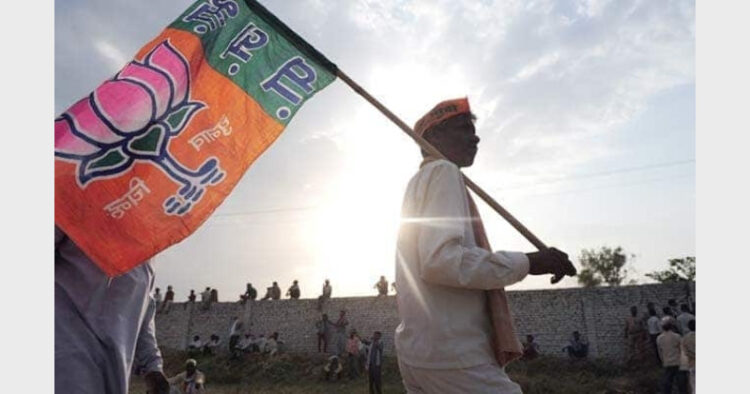New Delhi: The politics of Bhadralok – otherwise meaning gentleman-and-high caste – dominated the eastern Indian state’s polity for a long. Importantly, as explained by a Siliguri-based intellectual in North Bengal: “For the first time, voters in Bengal have started thinking on their own and not in the idiom of the communists or the culture of freebies and minority appeasement of Mamata Banerjee”.
The ‘Bhadralok’ (upper caste gentleman and symbol of Leftist approach) in Bengal did not cherish ‘caste-based politics as the term is understood in UP or Bihar. Nor they showed an inclination to respect Hindu sentiment. All these have come under the scanner in 2021.
Yet the politics of these ‘elites’ came to be known as the politics of the state. The CPI-M hierarchy was always dominated by Brahminical and upper castes order. Do a checklist of who’s-who and we know the list would have Chatterjees, Mukherjees, Banerjees etc. In Congress too, the same surnames did the round. Pranab Da was always proud of his ‘priesthood’ talent. J Jyoti Basu, an upper-caste Hindu was replaced by Buddhadeb Bhattacharya, also a Brahmin.
And in Trinamool too – there were likes of Mamata Banerjee, Sudip Bandyopadhyay — till the time Suvendu Adhikari and Mukul Roy chipped in. But on and after May 2 when votes will be counted and if BJP can achieve the ‘unthinkable’ and come to power, there will be a major turning point in Bengal politics.
The Narendra Modi-Amit Shah-J P Nadda trio would achieve ‘something’ which was not possible in Bengal without ‘Bhadralok intelligentsia’. Never in state’s history, were the upper castes and Kolkata-based intellectuals and their Left-liberalism — more often anti-Hindu – got marginalised in this manner. Only a few years ago, Mamata Banerjee would scream and mock: “Who is Amit Shah”.
In fact, in 2019 CPI-M had banked on the ‘upper castes’ factor but then Left supporters had decided to back Modi and the BJP. And thus, the voters did not mind taking the slogan ‘Jai Shri Ram’ repeatedly.
Of course, the BJP’s win – if that happens on May 2 counting – would be possible driven by the influential ‘Narendra Modi’ factor as well. Although, it would not be proper to undermine the roles of other factors like defection of Suvendu Adhikari and Mukul Roy and the blatant appeasement politics of Mamata Banerjee.
In Jan-February, I interacted with some intellectuals in Siliguri. One of them summed it up very well: “Nothing can actually galvanize the support of Hindu voters for BJP better than Modi’s personal image. Such polarisation was seen at the national level in 1989 during L K Advani’s Rath Yatra, then in 2002 and 2014 and importantly this time around in Bengal”.
The individual had requested not to identify him at least for a year even if BJP wins. The reference was to poll-related violence -so characteristic of the state. He also has said: “The Modi-Shah strategies have achieved certain elements which BJP was looking for.
First, the issues to win elections in Bengal, it could rope in support of backward castes – Rajbongshis and Namasudras – despite the Hindutva politics and crucially gave a ‘hope’ for Bengal voters that yes, power can be captured in this state also”.
In other words, one could say – the secular-Left ivory tower expertise on everything from idol worship to sharing Teesta water has been challenged. Thus ‘Jai Shri Ram’ could not be dismissed as a slogan of the north India and Gujarat.
The secret of Modi-Shah-Nadda electoral strategies also lies in the fact that Mamata Banerjee’s ‘hawai chappal’ and claim to simpleton lifestyle has been ‘questioned’ by a large section of voters. “The BJP has succeeded to make Pishi-Bhaipo (Mamata-Abhishek Banerjee) duo a symbol of corrupt, tyranny and worse dynastic succession,” says another academician from Durgapur.
There are over 28 per cent of the Muslim population in West Bengal. Hence, not only the religious minority voters
matter a lot in the state polls; actually ‘Hindu polarisation’ would also matter. In fact, the saffron party could win 18 seats out of 42 in 2019 and recorded a jump of about 30 per cent (from its 2016 vote share of just 10 per cent) votes because there was overwhelming Hindu polarisation with the Bengali middle class rooting for the BJP”.













Comments